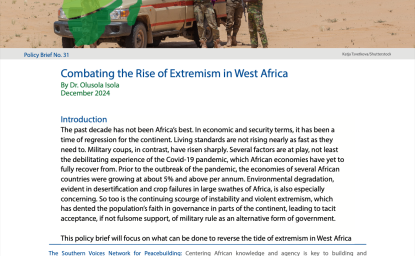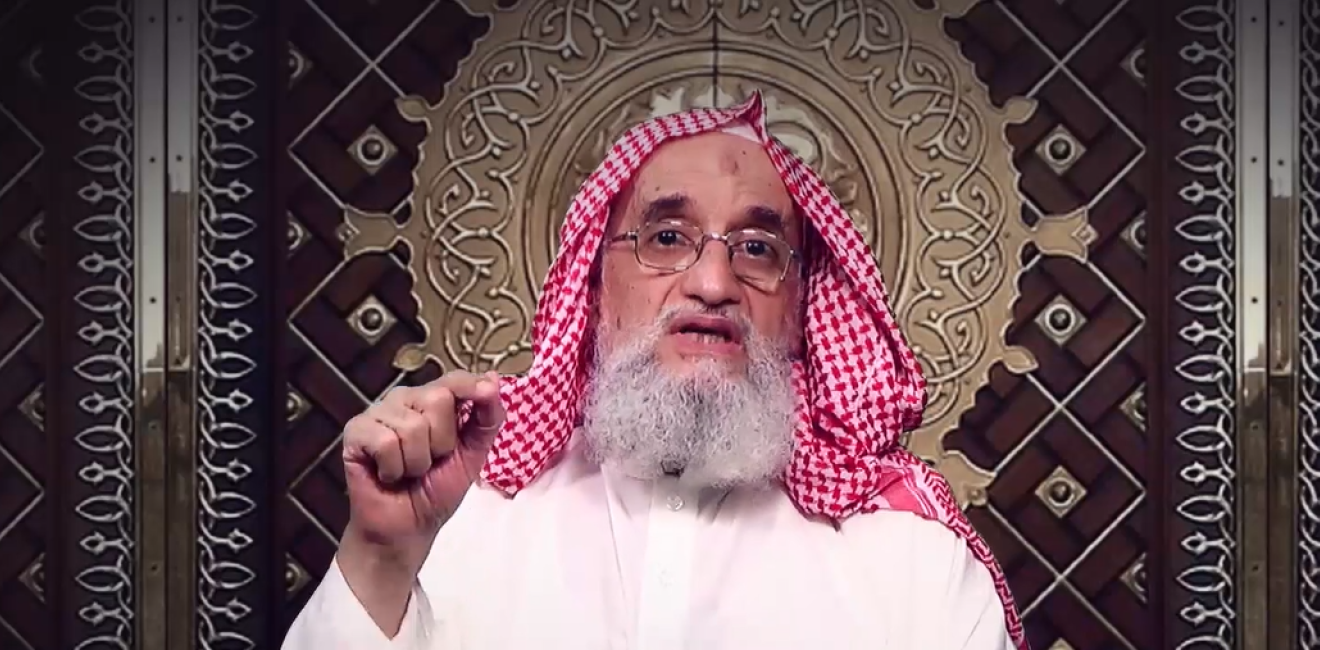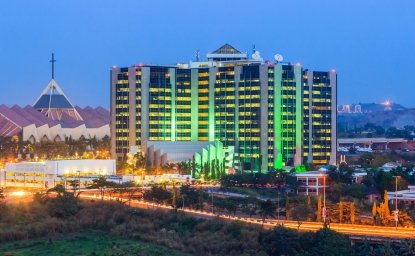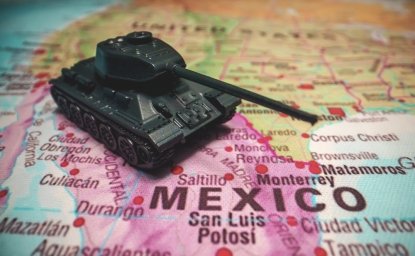Early on July 31, Ayman al Zawahiri, the leader of al Qaeda, was killed in a U.S. drone strike in Kabul. Zawahiri had been in hiding for years and had led the terrorist group since Osama bin Laden was killed in a U.S. raid in 2011.
“People around the world no longer need to fear the vicious and determined killer,” President Biden said in a televised address on August 1. “We make it clear again tonight that no matter how long it takes, no matter where you hide, if you are a threat to our people, the United States will find you and take you out.”
The operation demonstrated that the United States could still conduct counterterrorism operations in Afghanistan nearly a year after the last U.S. troops withdrew on August 30, 2021.
The United States had offered a reward of up to $25 million for information on Zawahiri. He played a key role in planning high-profile attacks against Americans, including:
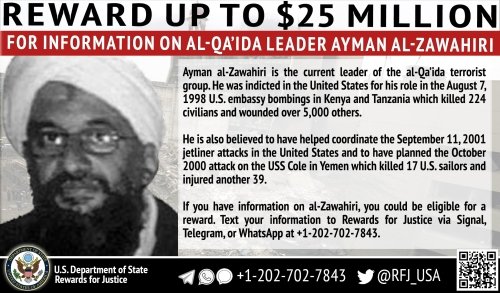
East African Embassy Bombings: On August 7, 1998, al Qaeda militants carried out near simultaneous truck bombings at the U.S. embassies in Nairobi, Kenya, and Dar es Salaam, Tanzania. Two hundred and twenty-four people died, including 12 Americans, and more than 4,500 people were injured.
USS Cole Bombing: On October 12, 2000, two al Qaeda militants drove a small boat packed with explosives and detonated them alongside the USS Cole, a destroyer that was making a fuel stop in Aden, Yemen. Seventeen U.S. sailors were killed and more than 30 others were injured.
9/11 Attacks: On September 11, 2001, 19 al Qaeda operatives hijacked four civilian airliners. Two crashed into the World Trade Center Towers in New York City, one hit the Pentagon near Washington, and one crashed in a field in southwestern Pennsylvania. Nearly 3,000 people were killed in what was the deadliest attack on American soil since Japan attacked Pearl Harbor in 1941.
Zawahiri was the fourth jihadi leader to die in a U.S. operation since 2011. In 2011, President Barack Obama deployed U.S. Navy SEALs to northern Pakistan, where they shot al Qaeda leader Osama bin Laden at his compound. Zawahiri then took over as leader. In 2019, President Donald Trump sent special forces to raid the home of ISIS leader and founder Abu Bakr al Baghdadi. Baghdadi blew himself up during the operation in northern Syria. In 2022, President Biden sent special forces to raid the home of ISIS leader Abu Ibrahim al Hashimi al Qurayshi in northern Syria. Qurayshi blew himself up rather than risk capture.

Zawahiri managed to evade being killed or captured for some two decades. “From hiding,” Biden said, “he coordinated al Qaeda’s branches and all around the world — including setting priorities, for providing operational guidance that called for and inspired attacks against U.S. targets.” Zawahiri also periodically appeared in videos in which he called for attacks on the United States and its allies.
U.S. intelligence finally tracked him in Afghanistan. Zawahiri's family moved into a safe house in Kabul in early 2022, several months after the Taliban takeover. As part of the agreement reached with the United States in 2020, the Taliban had pledged to not provide safe haven to al Qaeda. But Taliban officials were aware of Zawahiri’s presence, according to U.S. officials. The home was reportedly owned by an aide to Sirajuddin Haqqani, a senior Taliban leader. It was located in Sherpur, a neighborhood that had hosted Western embassies and wealthy residents for years.
The Taliban “grossly violated the Doha Agreement and repeated assurances to the world that they would not allow Afghan territory to be used by terrorists to threaten the security of other countries,” Secretary of State Antony Blinken said on August 1. “They also betrayed the Afghan people and their own stated desire for recognition from and normalization with the international community.”
The CIA drone launched two Hellfire missiles at Zawahiri while he was standing on the balcony at 6:18 am on July 31. His family members were in other parts of the safe house at the time, and no one else was injured in the precision strike, according to the U.S. government. “Zawahiri’s death deals a significant blow to al Qaeda and will degrade the group’s ability to operate, including against the U.S. Homeland,” a senior White House official told reporters on August 1.
Zawahiri's tenure will go down as a “problematic one,” Cole Bunzel, a fellow at Stanford University's Hoover Institution, said. “Under his leadership al Qaeda lost its branches in Iraq and Syria and was upstaged by a rival in the Islamic State. The much-trumpeted Taliban victory in Afghanistan has not yet proven to be the boon to al Qaeda’s fortunes that many expected it to be. It is remarkable that it took the Taliban coming to power in Afghanistan for the United States finally to be able to get to Zawahiri.”
Bunzel continued: “ISIS will claim—its supporters already have claimed—that this is evidence of conspiracy between the U.S. and the Taliban. They are probably wrong, but the optics here lend support to the ISIS narrative and will amplify voices questioning the Taliban's jihadi bona fides.”
Zawahiri’s death also raised questions about the future direction of al Qaeda’s senior leadership, Aaron Y. Zelin, a fellow at The Washington Institute for Near East Policy, said. “The four individuals believed to be in line to replace Zawahiri have different shortcomings. The first two: Sayf al Adl and Abd al Rahman al Maghribi are based in Iran, which could create major questions about legitimacy if they took the helm. The next two—the leaders of al Shabab (Somalia) and Jama’at Nasr al Islam wal Muslimin (Mali)—are not part of al Qaeda’s historical leadership and are also based outside the Afghanistan-Pakistan region, which could create other forms of legitimacy deficit.”
In the meantime, the day-to-day activities of al Qaeda’s branches are unlikely to change, Zelin added. The following are U.S. statements on the death of Zawahiri.
President Joe Biden
My fellow Americans, on Saturday, at my direction, the United States successfully concluded an airstrike in Kabul, Afghanistan, that killed the emir of al Qaeda, Ayman al-Zawahiri.
You know, al-Zawahiri was bin Laden’s leader. He was with him all the — the whole time. He was his number-two man, his deputy at the time of the terrorist attack of 9/11. He was deeply involved in the planning of 9/11, one of the most responsible for the attacks that murdered 2,977 people on American soil.
For decades, he was a mastermind behind attacks against Americans, including the bombing of the USS Cole in 2000, which killed 17 American sailors and wounded dozens more.
He played a key role — a key role in the bombing of U.S. embassies in Kenya and Tanzania, killing 224 and wounding over 4,500 others.
He carved a trail of murder and violence against American citizens, American service members, American diplomats, and American interests. And since the United States delivered justice to bin Laden 11 years ago, Zawahiri has been a leader of al Qaeda — the leader.
From hiding, he coordinated al Qaeda’s branches and all around the world — including setting priorities, for providing operational guidance that called for and inspired attacks against U.S. targets.
He made videos, including in recent weeks, calling for his followers to attack the United States and our allies.
Now justice has been delivered, and this terrorist leader is no more.
People around the world no longer need to fear the vicious and determined killer. The United States continues to demonstrate our resolve and our capacity to defend the American people against those who seek to do us harm.
You know, we — we make it clear again tonight that no matter how long it takes, no matter where you hide, if you are a threat to our people, the United States will find you and take you out.
After relentlessly seeking Zawahiri for years under Presidents Bush, Obama, and Trump, our intelligence community located Zawahiri earlier this year. He had moved to downtown Kabul to reunite with members of his immediate family.
After carefully considering the clear and convincing evidence of his location, I authorized a precision strike that would remove him from the battlefield once and for all.
This mission was carefully planned and rigorously minimized the risk of harm to other civilians. And one week ago, after being advised that the conditions were optimal, I gave the final approval to go get him, and the mission was a success. None of his family members were hurt, and there were no civilian casualties.
I’m sharing this news with the American people now, after confirming the mission’s total success through the painstaking work of our counterterrorism community and key allies and partners.
My administration has kept congressional leaders informed as well.
When I ended our military mission in Afghanistan almost a year ago, I made the decision that after 20 years of war, the United States no longer needed thousands of boots on the ground
in Afghanistan to protect America from terrorists who seek to do us harm.
And I made a promise to the American people that we’d continue to conduct effective counterterrorism operations in Afghanistan and beyond.
We’ve done just that.
In February, our forces conducted a daring mission in Syria that eliminated the emir of ISIS.
Last month, we took out another key ISIS leader. Now we have eliminated the emir of al Qaeda. He will never again — never again allow Afghanistan to become a terrorist safe haven because he is gone, and we’re going to make sure that nothing else happens. You know, it can’t be a launching pad against the United States. We’re going to see to it that won’t happen.
This operation is a clear demonstration that we will, we can, and we’ll always make good on the sol- — solemn pledge.
My administration will continue to vigilantly monitor and address threats from al Qaeda, no matter where they emanate from.
As Commander-in-Chief, it is my solemn responsibility to make America safe in a dangerous world. The United States did not seek this war against terror. It came to us, and we answered with the same principles and resolve that have shaped us for generation upon generation: to protect the innocent, defend liberty, and we keep the light of freedom burning — a beacon for the rest of the entire world.
Because this is the great and defining truth about our nation and our people: We do not break. We never give in. We never back down.
Last year, on September 11th, I once more paid my respects to Ground Zero in New York City, at that quiet field in Shanksville, at the Pentagon — and at the Pentagon.
Standing at the memorial at Ground Zero, seeing the names of those who died forever etched in bronze, is a powerful reminder of the sacred promise we made as a nation: We will never forget.
The memorial also bears a quotation from Virgil: “No day shall erase you from the memory of time.” “No day shall erase you from the memory of time.”
So we continue to mourn every innocent life that was stolen on 9/11 and honor their memories.
To the families who lost fathers and mothers, husbands and wives, sons and daughters, brothers and sisters, friends and co-workers on that searing September day, it is my hope that this decisive action will bring one more measure of closure. No day shall erase them from the memory of time.
Today and every day, I am so grateful to the superb patriots who serve the United States intelligence community and counterterrorism communities. They never forget. Those dedicated women and men who tirelessly worked every single day to keep our country safe and to prevent future tragedies — it is thanks to their extraordinary persistence and skill that this operation was a success. They have made us all safer.
And to those around the world who continue to seek to harm the United States, hear me now: We will always remain vigilant, and we will act. And we will always do what is necessary to ensure the safety and security of Americans at home and around the globe.
Today, we remember the lost. We commit ourselves to the safety of the living. And we pledge that we shall never waver from defending our nation and its people.
Thank you, all. And may God protect our troops and all those who serve in harm’s way.
We will never — we will never give up.
Secretary of State Antony Blinken
President Biden last year committed to the American people that, following the withdrawal of U.S. forces, the United States would continue to protect our country and act against terrorist threats emanating from Afghanistan. The President made clear that we would not hesitate to protect the Homeland. With the operation that delivered justice to Ayman al-Zawihiri, the leader of al Qa’ida, we have made good on that commitment and we will continue to do so in the face of any future threats. We were able to do so in this instance — and will be positioned to do so going forward — as a result of the skill and professionalism of our intelligence and counterterrorism community colleagues, for whom the President and I are deeply grateful.
By hosting and sheltering the leader of al Qa’ida in Kabul, the Taliban grossly violated the Doha Agreement and repeated assurances to the world that they would not allow Afghan territory to be used by terrorists to threaten the security of other countries. They also betrayed the Afghan people and their own stated desire for recognition from and normalization with the international community. In the face of the Taliban’s unwillingness or inability to abide by their commitments, we will continue to support the Afghan people with robust humanitarian assistance and to advocate for the protection of their human rights, especially of women and girls.
The world is a safer place following the death of Zawahiri, and the United States will continue to act resolutely against those who would threaten our country, our people, or our allies and partners.
Background Press Call by a Senior Administration Official
SENIOR ADMINISTRATION OFFICIAL: At 9:48 p.m. Eastern Time on July 30th, 6:18 a.m. Kabul Time on July 31st, the United States undertook a precision counterterrorism operation in Kabul, Afghanistan, at the President’s direction.
That operation targeted and killed al Qaeda’s current leader, Ayman al-Zawahiri. Zawahiri was Osama bin Laden’s deputy during the 9/11 attacks and his successor in 2011, following bin Laden’s death during a U.S. counterterrorism mission. Zawahiri continued to pose an active threat to U.S. persons, interests, and national security.
As President Biden has consistently said, we will not allow Afghanistan to become a safe haven for terrorists who might bring harm to Americans. We met that commitment on Saturday night. And in doing so, we showed that, without American forces on the ground in Afghanistan and in harm’s way, we remain able to identify and locate even the world’s most wanted terrorist, and then take action to remove him from the battlefield.
Zawahiri was al Qaeda’s most senior leader since June 2011. He continued to provide strategic direction to al Qaeda’s affiliates worldwide, calling for attacks on the United States. His death deals a significant blow to al Qaeda and will degrade the group’s ability to operate, including against the U.S. homeland.
Our ability to locate Zawahiri after years of hiding was the result of careful, patient, and persistent work by our counterterrorism professionals. And our ability to act on it effectively was made possible by quick, decisive action by the President once we knew with confidence where Zawahiri was located and that we could conduct the operation in a manner that limited the risk of civilian casualties.
As with all similar operations, various parts of the counterterrorism community collaborated closely to plan and execute this complex operation.
For several years, the U.S. government has been aware of a network that we assessed supported Zawahiri.
In the last year, we had been watching for indications of al Qaeda’s presence in Afghanistan.
This year, we identified that Zawahiri’s family — his wife, his daughter, and her children — relocated to a safe house in Kabul.
We then identified Zawahiri at the location in Kabul through layering multiple streams of intelligence.
Zawahiri’s family exercised longstanding terrorist tradecraft that we assessed was designed to prevent anyone from following them to Zawahiri.
Over several months, we increased our confidence that Zawahiri was present at the location in Kabul, and we gained insight on others present at the location and their activities.
In early April, Jon Finer and Liz Sherwood-Randall were briefed on this intelligence. Jake Sullivan, Jon, and Liz Sherwood-Randall were briefed subsequently as more intelligence was developed. And Jake briefed the President shortly thereafter.
We were able to build a pattern of life through multiple, independent sources of information to inform the operation.
Senior Haqqani Taliban figures were aware of Zawahiri’s presence in Kabul. Once Zawahiri arrived at the location, we are not aware of him ever leaving the safe house. We identified Zawahiri on multiple occasions for sustained periods of time on the balcony where he was ultimately struck.
Zawahiri continued to produce videos once he arrived at the safe house. And indeed, given the way in which al Qaeda produces videos, we should not be surprised if Zawahiri filmed additional videos that may be released subsequent to his death on July 30th.
We also investigated the construction and nature of the safe house in which he was located so that we could confidently conduct an operation to kill Zawahiri without threatening the structural integrity of the building while minimizing the risk to civilians, including Zawahiri’s family.
We convened a team of independent analysts to review all data surrounding the identity of the occupants of the safe house. We systemically eliminated all reasonable options other than Zawahiri after layering all source intelligence against the problem.
This prompted a series of close-hold briefings and meetings to vet the intelligence and to evaluate clear options to present to the President.
Because the information was extraordinarily sensitive, only a very small and select group of officials at key agencies were brought into the process and the deliberations at this early stage.
We needed to make sure that our information was rock solid and that we developed clear options for the President that he could consider that would also minimize the risk of any civilian casualties and take into account the ramifications of taking such a strike in downtown Kabul. And we need to confirm the legal basis for the operation.
As our confidence level increased that we had identified Zawahiri and could undertake a precise, targeted strike, the President convened, over the course of the last few weeks, several meetings with his key advisors and Cabinet members to carefully scrutinize the intelligence and evaluate the best course of action for targeting Zawahiri.
The President received updates on the development of the target throughout May and June. On July 1st, the President was briefed on a proposed operation in the White House Situation Room by key members of his Cabinet, including Director of the CIA William Burns and counterterrorism experts, Director of National Intelligence Avril Haines, and National Counterterrorism Center Director Christine Abizaid, along with National Security Advisor Sullivan, Principal Deputy National Security Advisor Finer, and Homeland Security Advisor Sherwood-Randall.
The President was, as always, deeply engaged in the briefing and immersed in the intelligence. He asked detailed questions about what we knew and how we knew it.
Importantly, he examined closely the model of Zawahiri’s house that the intelligence community had built and brought into the White House Situation Room for briefings on this issue. He sought explanations of lighting, of weather, of construction materials, and of other factors that could influence the success of this operation and reduce the risk of civilian casualties.
He was particularly focused on ensuring that every step had been taken to ensure the operation would minimize that risk, and he wanted to understand the basis upon which we had confidence in our assessments.
The President requested further information on the building plans and about likely effects of a strike, in particular directing the intelligence community to prepare a series of impact analyses so that the President could fully understand and we would be prepared to manage the ramifications of the strike in the region and beyond.
The President also pressed us to consider how to mitigate risks to other goals, including the safe return of Mark Frerichs, ongoing efforts to relocate our Afghan partners, and access by air to Afghanistan for future counterterrorism needs.
Principals and deputies also convened multiple times in person in the White House Situation Room over the course of June and July to pressure test the intelligence picture and to ensure that we sufficiently “red teamed” the options, while also thinking through how we might mitigate any risks or costs associated with moving forward.
A very tight circle of senior interagency lawyers examined the intelligence reporting and confirmed the legal basis for the operation. They confirmed Zawahiri was a lawful target based on his continuing leadership role in al Qaeda and his participation in and operational support for al Qaeda attacks.
On July 25th, the President convened his key Cabinet members and advisors to receive a final, updated briefing on the intelligence assessment, which continued to strengthen on a daily basis.
The President received an updated operational report and pressed at a granular level. He asked again about any other options that would reduce collateral or civilian casualties. He wanted to understand more about the layout of rooms behind the door and windows on the third floor of the building.
This also included extensive discussion about the possible impact on the effort to recover Mark Frerichs that is underway. He also discussed the impact on the relationship and conduct of the Taliban more generally, including on our efforts to continue relocating Afghans, SIVs, and American citizen family members.
He also considered the impact on our ability to access Afghanistan for future counterterrorism missions and on other interests of the United States in the region and beyond.
Finally, he asked for each participant’s views. All strongly recommended approval of this target.
At the conclusion of that meeting, the President authorized a precise, tailored airstrike, on the condition that a strike minimize to the greatest extent possible the risk of civilian casualties. This authorization meant that the U.S. government could conduct an airstrike once an opportunity was available.
The strike was ultimately carried out, as I said, at 9:48 p.m. Eastern on July 30th by an unmanned aerial vehicle. Two Hellfire missiles were fired at Ayman al-Zawahiri, who was killed.
We are confident through our intelligence sources and methods, including multiple streams of intelligence, that we killed Zawahiri and no other individuals.
Zawahiri’s family members were present in other parts of the safe house at the time of the strike, and were purposefully not targeted and were unharmed.
We have no indications that civilians were harmed in this strike. As I have said, we took every possible precaution to avoid civilian harm.
Following the strike, another independent team reviewed holdings for confirmation of who was killed at the safe house. Their findings concluded with high confidence that only Zawahiri died in the strike.
We are also aware that Haqqani Taliban members took actions after the strike to conceal Zawahiri’s former presence at the location. We have identified a concerted effort to restrict access to the safe house and the surrounding area for hours after the strike.
The safe house used by Zawahiri is now empty. The Haqqani Taliban members acted quickly to remove Zawahiri’s wife, his daughter, and her children to another location, consistent with a broader effort to cover up that they had been living in the safe house.
Zawahiri’s death deals a significant blow to al Qaeda and will degrade the group’s ability to operate, including against the U.S. Homeland.
As I indicated at the outset, this action keeps faith with the President’s solemn pledge to protect Americans from terrorist threats, including addressing such threats that might emerge from Afghanistan.
Even as the President ended two decades of war in Afghanistan by getting American service men and women out of harm’s way there, he promised that we would establish a capacity, from outside the country, to identify and address terrorist threats to Americans.
He made good on that with this action, as U.S. forces showed extraordinary capacity to build an intelligence picture on the world’s most wanted terrorist and then take precise action to remove him from the battlefield.
In so doing, the President’s decision has made the world a safer place and brought an additional measure of closure for all of us who mourn the victims of 9/11 and other al Qaeda violence.
Q: From your estimation and your vast experience, could he have been in that Haqqani safe house without the direct knowledge of Pakistan’s ISI? What involvement could Pakistan have had to hiding him over these years, as well as what are the implications for possible cooperation with the Taliban government going forward?
SENIOR ADMINISTRATION OFFICIAL: What we know is that senior Haqqani Taliban were aware of his presence in Kabul. And I can’t comment further on other countries’ involvement.
Q: Can you say whether there were any U.S. personnel on the ground at the time of the operation in terms of verification and what is their status now? Has there been any U.S. contact in the run-up to the strike or in the aftermath with the Taliban in Kabul?
And then also, by any chance, can you provide a little bit more information in terms of how the President monitored the strike itself given his COVID-19 rebound case?
SENIOR ADMINISTRATION OFFICIAL: There were zero American personnel on the ground in Kabul. And the President was kept informed as the operation began and when it was concluded.
Q: I’ve seen Afghan journalists reporting that the son and son-in-law of the Taliban Interior Minister Sirajuddin Haqqani was also killed in the airstrike in Kabul. Are you in a position to confirm or deny this at this stage?
SENIOR ADMINISTRATION OFFICIAL: We have no reason to believe that he was killed. As I said, we have no evidence of any other loss of life or casualty in this strike that was a precise and calibrated strike targeted on one individual and successfully executed.
Q: Just when you were talking about the civilian casualties, you had said several times that the President was focused on minimizing that. So, at the moment that the President ordered the strikes, would he have been okay with some very minimal civilian casualties, including possibly his family members who you said were also in the safe house? Is that something that he would have accepted as a possible risk?
SENIOR ADMINISTRATION OFFICIAL: We had no reason to believe that there would be any other casualties based on the pattern of life that was developed and the precision of the operation that was proposed.
Q: What are the implications of cooperating with the Taliban going forward? Can you talk about the nature of the Hellfire fired? Such that, it sounds like only the patio was destroyed.
And then he and his family, of course, had been assumed to be in Pakistan. When you say that they moved to Afghanistan this year, can you talk about any assessment as to why they might have done that — for example, they thought they were safer in a Taliban-held country?
SENIOR ADMINISTRATION OFFICIAL: So, you asked about the relationship with the Taliban going forward. Obviously, this is a very important point for us to make clear to the Taliban that we expect them to abide by the terms of the Doha Agreement. And the presence of Zawahiri in downtown Kabul was a clear violation of that.
Going forward with the Taliban, we’ll continue to hold them accountable for their actions. And we have made clear to them in the intervening days that we also expect them to take no action that would harm Mark Frerichs as we are involved in the effort to secure his release after his long detention and captivity.
So, we expect to continue to have a dialogue with them about matters of our interests, including ensuring that they understand the implications of this strike we have taken, which is that we will take action to protect our interests pursuant to the terms of the agreement, which confirm that al Qaeda should never be allowed to re-establish itself in Afghanistan.
Q: Just following up on the questions on the Taliban, can you tell us to what extent the Taliban was informed of this strike — presumably not before, but afterwards?
And can you also go over again the intel that leads you to believe clearly that you got the individual that you say you got?
SENIOR ADMINISTRATION OFFICIAL: Can I go over the intelligence? Okay. No, of course, we did not alert the Taliban to the fact that we were going to take this strike.
Second, we have multiple intelligence sources via multiple methods that have enabled us to confirm that this was Zawahiri and that we were successful in achieving our objective. And while I can’t get into the details of that, we were able to confirm this in a fashion that enables us tonight to have the President go out to the world and announce that this has taken place with high confidence.
That’s a very important measure for the intelligence community to be able to evaluate with high confidence that they have assessed that this was Zawahiri and that he was killed on the balcony in this strike that we took on Saturday night here, Sunday morning in Kabul.
Q: I wanted to see if we could clarify whether there was any U.S. military involvement in this operation, writ large. It sounds like it was largely in the intelligence side of the house, but in terms of (inaudible) the target, anything else like that that they may have weighed, and whether Defense Secretary Austin was involved as well.
And then just in terms of clarifying what happened in the strike itself, it sounds like the U.S. was basically waiting until they had visual of him that he sort of stepped out on the balcony and that it was a planned target of opportunity once he was in plain view. Is that a fair way to put it?
SENIOR ADMINISTRATION OFFICIAL: First of all, on the question you asked about who was involved, the President, as I said, received input from all of his national security team at the most senior level about whether to proceed with this operation. And he, of course, asked for that judgment from everyone involved in ensuring our national security.
On the question about which agencies were involved, the strike was carried out by the U.S. government, and it’s a team effort to get something like this done. So, I’m not going to go into details of who did what, but it’s important to know that we bring the full suite of capabilities to bear when we do something like this.
Q: Can you talk about how much or how little Zawahiri was actually in charge of al Qaeda at this time and your concern of blowback or counterattacks from them as a result of this?
SENIOR ADMINISTRATION OFFICIAL: Zawahiri was the emir of al Qaeda. It’s very important to recognize that he played this role since Osama bin Laden was targeted, as I mentioned earlier. He was the most senior leader, their emir, who used his authority across al Qaeda’s global network of regional affiliates and followers to provide strategic direction and continually urging attacks on the United States and reinforcing the prioritization of the United States as al Qaeda’s primary enemy.
I want to emphasize the current nature of that guidance. We have video this year of his making the case, and we know of his support to affiliates and guidance to affiliates around the world to target us.
He built an organizational model that allowed him to lead the global network, even from relative isolation. And he was one of the last remaining figures who carried this kind of significance based on the original group around bin Laden across a varied affiliate network.

The Islamists
Learn more about Hamas and how it relates to similarly aligned organizations throughout the region. Read more

Explore More
Browse Insights & Analysis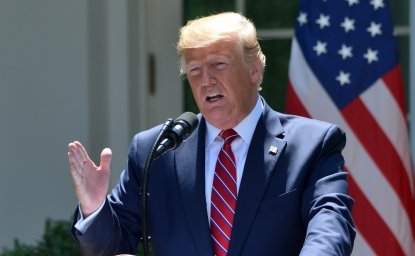
What Trump’s 2025 Inauguration Speech Says About US-Mexico Policy
